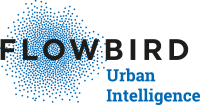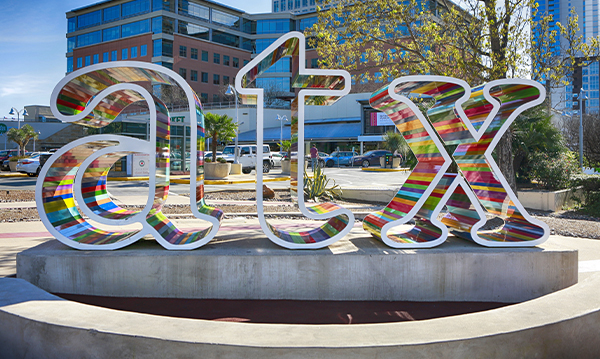New system addresses high parking demand while reducing citations
Moorestown, NJ — The City of Austin has partnered with Flowbird Group, the leader in curbside management and urban mobility solutions, to adopt a more flexible street parking system and improve the parking experience for all travelers. The new system implements ‘pay-by-plate’ technology where users paying at a parking kiosk simply enter their license plate number and no longer need to display a sticker for their parking session. The system also enables a ‘tiered parking fee structure,’ better managing parking demand while reducing the number of citations handed out by enforcement.
The City of Austin currently has 850 Flowbird Strada pay stations located around the city to manage 8,000+ paid parking spaces. Up until September of this year, drivers paid a flat $2 per hour at the parking pay stations and walked back to their vehicle to affix their payment sticker onto their dash. The problem? There was no incentive to park in an off-street garage for pro-longed or commuter parking, blocking new customers who may be in-and-out. The price to park on-street all day was equal, if not lower, than parking all day in a parking garage.
According to a Downtown Austin Parking Strategy report released by the Downtown Austin Alliance, “The rates did not match the level of demand or patterns of behavior. On-street prices were lower than off-street prices. There was a direct incentive for drivers to circle and hunt for the best deal.”
By implementing Flowbird’s pay-by-plate parking technology, the city was able to implement a ‘tiered’ parking structure. The two hour maximum stay was increased to 10 hours. For a consistent user experience, the first two hours remain unchanged at the city’s $2 hourly base rate. Additional time purchased increases in cost to encourage turnover and good customer use of on-street parking capacity.
Flowbird’s pay stations have been programmed with progressive pricing software, a method that has become popular in curb management because the rate gets higher the longer you park on-street. The first hour is $2.00/hour. The price then increases at the 3rd hour, the 4th, 5th and so on, encouraging turnover of parking spots. The breakdown of the new fee structure looks like this:
‒ Hour 1: $2 (total: $2)
‒ Hour 2: $2 (total: $4)
‒ Hour 3: $3 (total: $7)
‒ Hour 4: $3.50 (total: $10.50)
‒ Hour 5: $4 (total: $14.50)
‒ Hour 6: $4.50 (total: $19)
‒ Hour 7: $5 (total: $24)
‒ Hour 8: $5 (total: $29)
‒ Hour 9: $5 (total: $34)
‒ Hour 10: $5 (total: $39)
Drivers will be able to add time as needed at either a kiosk or the city’s mobile app, Park ATX. Parking enforcement officers will still monitor to see if drivers are overstaying their time. If they are, instead of getting a citation, a charge for another hour will be added automatically.
“Simplifying the parking system will improve the customer experience of parking in Austin and optimize the use of our curb space” said Austin Transportation Parking Enterprise Manager, Jason Redfern, “These changes will also reduce parking citations issued for people overstaying time limits simply because they needed a few more minutes to complete their business.”
The new pay-by-plate tiered rate system encourages commuters to park off-street in a public or private garage. Austin Transportation is working with area garages to provide affordable early bird and all-day parking throughout the downtown for commuters.
“This rate modernization better represents the true value of street parking,” said Austin Transportation Director, Robert Spillar, “It also supports the City of Austin’s goals of providing more mobility options and reducing single-occupancy vehicle trips.”
The City of Austin, one of the fastest growing cities in the United States, first partnered with Flowbird in 2009 with the installation of 750 Strada solar-powered pay stations. Today, the city manages 850 Flowbird kiosks and continues to partner with Flowbird to bring their customers the most advanced mobility solutions the industry has to offer.

